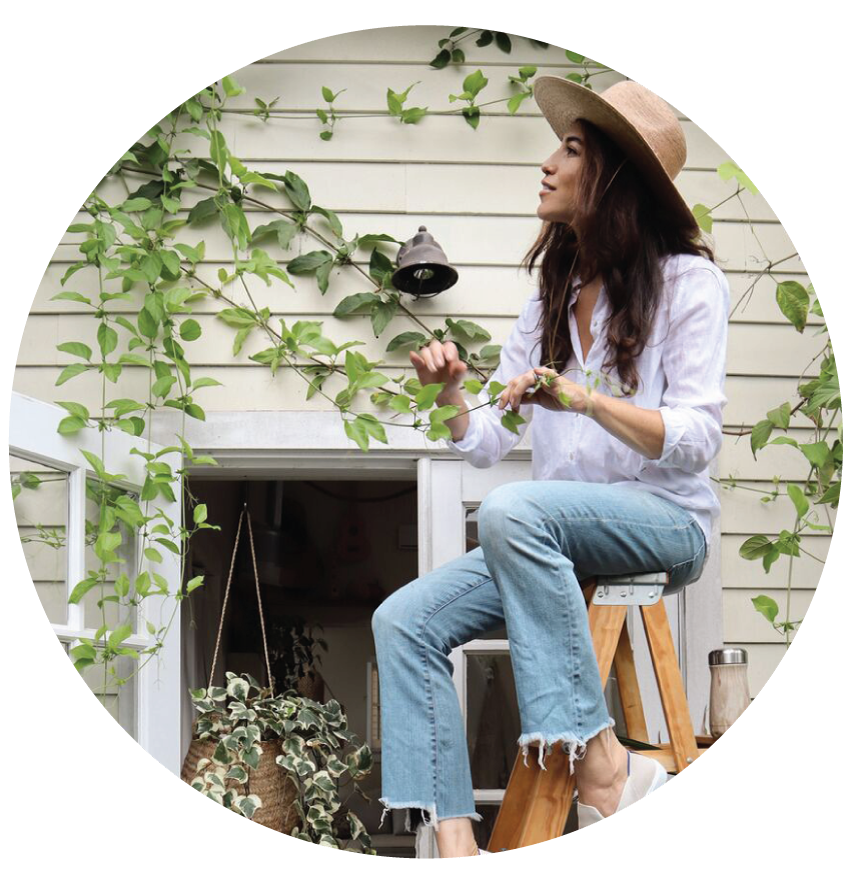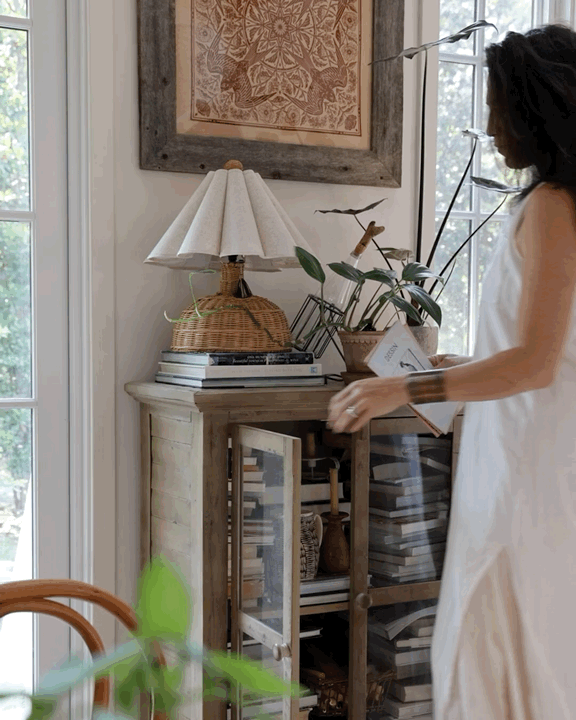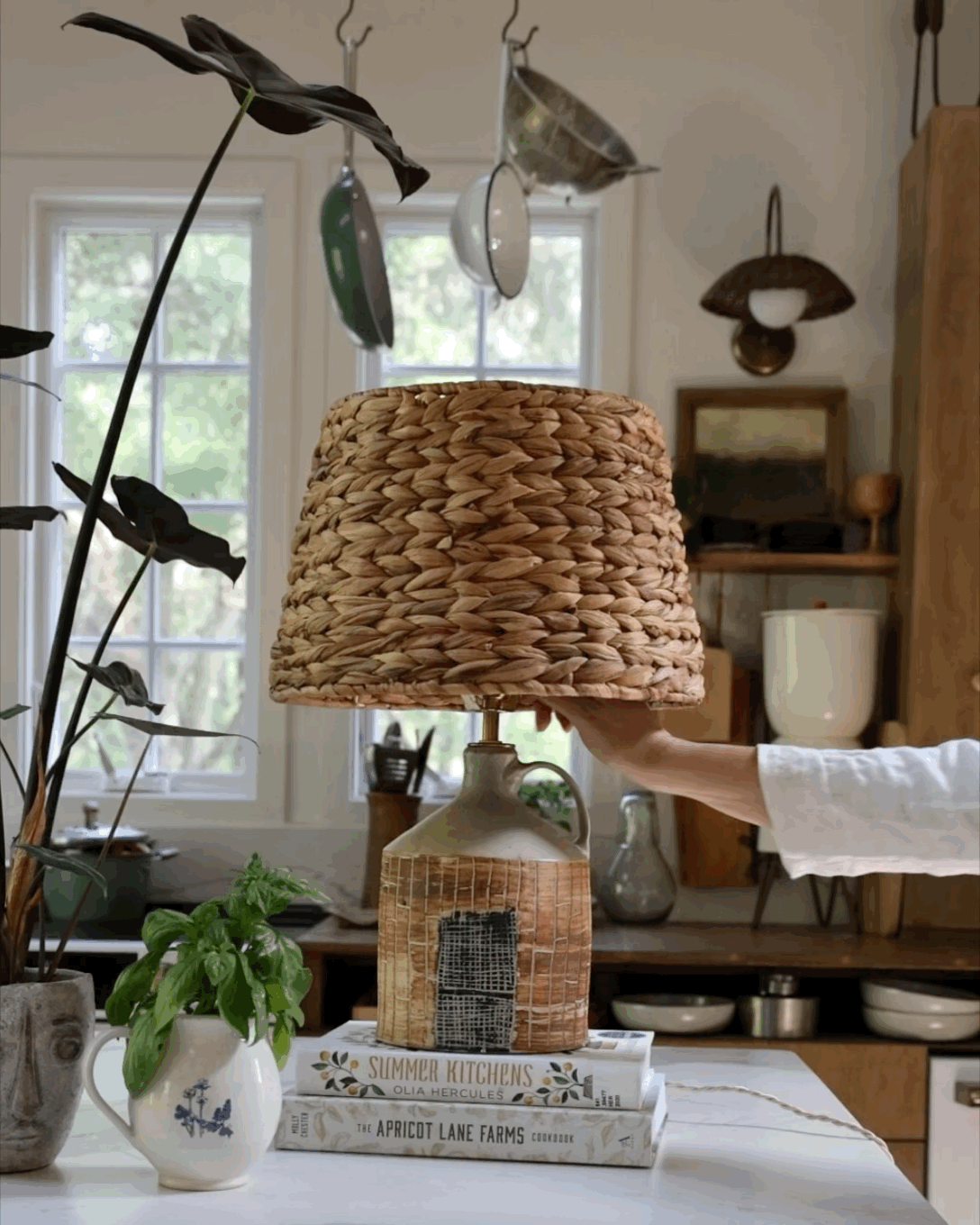Before & "After": Turning a Construction Zone into a Garden & Outdoor Lounge
Note: While the following is a “before & after” post, the “after” is still very much a work in progress, and will remain so for years to come…
Approaching the outdoor design at our new cottage has been a challenge for me. After 9 years of working on our previous garden, we’d FINALLY gotten it to look and function exactly the way we’d long envisioned. (You can see some of the before / after photos scattered throughout this page on the blog.) But then, a single and short year later, we moved. To start all over again — from a construction zone, no less — felt both overwhelming and beyond budget.
BEFORE: February 2022. We built in an empty field so that no trees or branches needed to be removed. The Live Oak stump is leftover from a beautiful, ancient tree that split and fell down naturally years ago. The Sago Palms were here upon our arrival, and are toxic. We removed the ones that drop seeds, and we keep the pups well away from the palms remaining.
Above: May 2023
So we started the only way we could:
S-l-o-w-l-y.
BEFORE: March 2023. I desperately wanted a natural willow fence, but in this environment we truly require a utilitarian barrier at the foot of the cottage to securely keep gators out while keeping our pups in. Enclosure is about 26’ x 26’.
Above: Work in progress. The vines will eventually engulf the fence posts and climb the porch supports, and we plan to establish shade-tolerant, oversized shrubs behind the sofa to obscure the underside of the cottage and create a living, breathable backdrop of green behind the sofa.
Our wonderful neighbors guided us through much of the process, teaching us more about native and regionally-friendly plants, and helping us obtain reduced prices on trees that would’ve otherwise been beyond our price-point. (They also collected all the plastic nursery pots for return to / reuse by the locally-owned plants shops.)
Our goal with this first pass at the garden was to restore the natural ground cover that was destroyed during construction, diversify the species of plants for both pollinators and shade, let select areas re-wild, and better conceal the underbelly of the cottage, which is built-up 5-6 feet above the ground due to flood safety requirements.
Over the course of several months, we planted the following around our cottage:
5 Fruit trees
6 Shade trees
12+ Creepers & vines
12+ Blooming shrubs
7 Herbs & Veggies (to compliment the 72 edible plants on our Lettuce Grow towers)
25 Shrubs
32 Cord grasses
Seeds: sunflowers, coreopsis, sweat pea, and more.
For natural (and free!) garden edging, we used dry fallen branches we’d collected over time. We hauled them home from around the land via cargo bike, wagon and Jeep.
We let the shape of the branches dictate the flow of the space.
The branches formed the pathways and zones within the space. We deliberately didn’t bother with weed barriers— more on why below.
The branches keep the gravel and mulch separated, and provide a natural surface for animals and plants to explore.
In a few spots within the fenced-in garden, we used mulch and pea gravel to delineate between pathways and plant zones. We didn’t bother with weed barriers, as the pea gravel wasn’t chosen for aesthetics, but for establishing natural drainage and solid, less muddy pathways for rainy days. (Plus it’s such a small area that it’s not hard to pull out unwanted greenery when need be.) Plus it’s tough overall, but soft enough for the pups’ paws.
This fence itself is, sadly, vastly far from the welcoming, warm, ethereal, willow border of my dreams. Instead it’s a utilitarian barrier at the foot of the cottage that is intended to securely keep gators out while keeping our pups in. (The dogs have access to a much larger space to roam freely nearby, but this closer, compact yard is a helpful enclosure for the dogs to access in the middle of the night and during particularly stormy spells.
To conceal the fence in time, we planted Coral Honeysuckle and Jasmine, which will creep and climb, ultimately covering the fence with a breathable barrier that welcomes pollinators.
We created space for a minimal lounge zone, an outdoor cowboy grill, and a bistro set. (And, of course, the kids are working on a fairy garden.) Eventually our outdoor shower will be included as well, hopefully privatized with the help of some creeping vines snaking their way over the fence.
We have two outdoor sofas— a rattan model for the porch, and a wooden design for the garden. The wooden sofa (not pictured in these visuals) is from our Venice cottage, and was made from reclaimed wood by our friends at Tumbleweed & Dandelion. The other is a “NATURA” sectional from Woven. It’s a modular system, which increases its use and versatility around our home and greenhouse.
Above: The “NATURA” sectional from Woven
Above: The “NATURA” sectional from Woven
The NATURA is made from rattan, bio based foam and upcycled, recyclable all-weather fabric made from single use plastic water bottles. There is no hardware, it’s lightweight and ships standard, and it’s 95% compostable and recyclable through Woven’s take-back program.
Out front, we intend to add a couple of locally-crafted Cypress chairs near the enormous preserved Live Oak stump. The stump is leftover from an ancient tree that feel down naturally years ago, and from its core another Oak has sprouted. We’ve slowly started planting flowers, vines and shrubs around it, while adding bird feeders + baths nearby. Already these changes have brought a myriad of pollinators, songbirds, deer, nocturnal animals, and sandhill cranes.
So many folks have asked why we chose vines and prairie grasses rather than more tamed and manicured plants, noting concerns over animals such as snakes, armadillos, raccoons and the likes.
But our goal isn’t to push the animals out… on the contrary (with the exception of those almighty gators). These creature were all here first, plus they need habitat since the county is rapidly ripping out acre after acre of old growth wooded areas in order to construct large housing developments. Our thought is that the land we share can remain a safe haven for the animals who have long lived here, while also providing them with cover that actually pulls them away from our paths and doorways.
This area has only just begun to take root. We so look forward to watching it grow, and learning from the experience.
Here’s to getting outside and celebrating nature while simultaneously respecting our one magnificent, collective home through our home and garden design decisions.
Note: I want to share a massive and heart-felt thanks to our incredible neighbors, who gave us so much of their time, energy, kindness, and expertise. And I also want to thank my parents — who have tended to this land for over 30 years — for their willingness to let Adam and I explore our own vision for this acreage. We are, after-all, merely a guest house / ADU to their home. We so appreciate their openness to reimagining what some of this land could become.







































